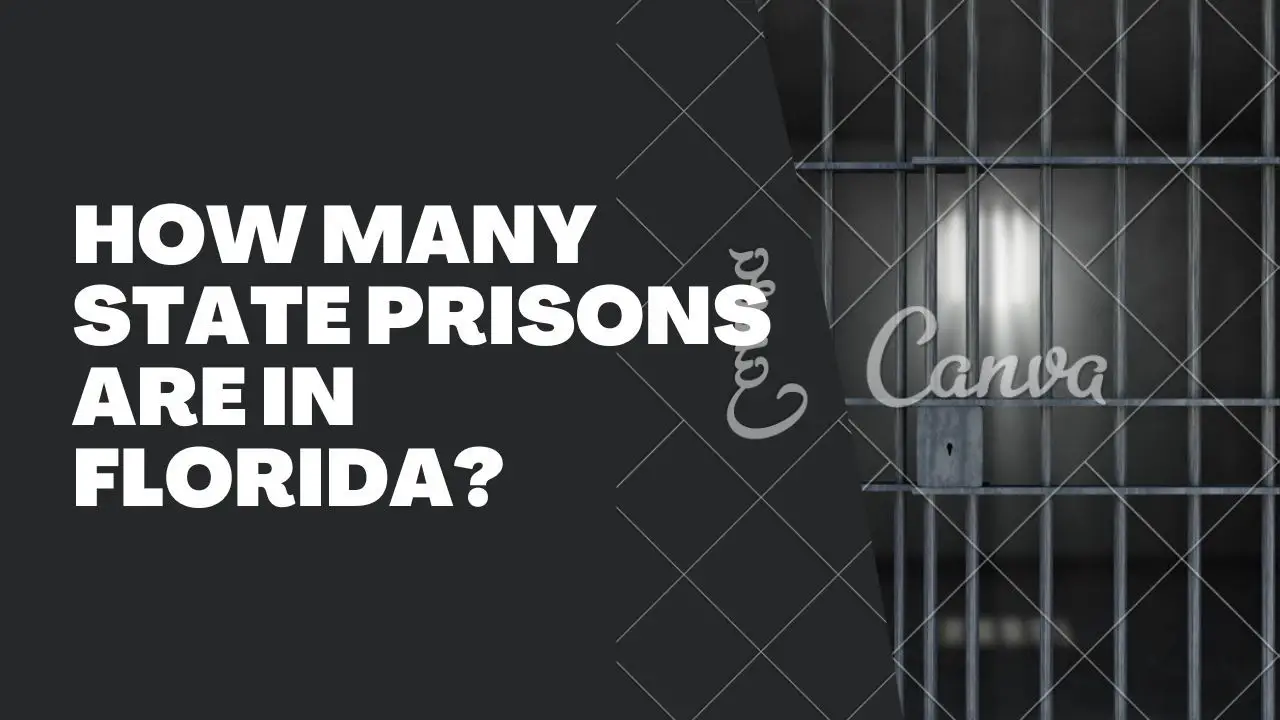How many state prisons are in Florida?
In this article, we'll take a closer look at the Florida Department of Corrections (FDC) and uncover the facts and figures surrounding the state's prison system.

Florida is renowned for its strong state prison system, in addition to its gorgeous beaches and theme parks. Ever wondered how many state prisons exist in the Sunshine State?
In this blog post, we'll take a closer look at the Florida Department of Corrections (FDC) and uncover the facts and figures surrounding the state's prison system. So, let's dive in and explore the world behind bars in Florida!
Understanding the Florida State Prison System
The FDC operates various types of facilities throughout Florida. These consist of large facilities, work camps, annexes, work release facilities, and road prisons/forestry camps. Each facility serves a specific purpose and caters to different categories of offenders.
Major institutions form the backbone of the state prison system, accommodating a large number of inmates. They are designed to house offenders who require maximum security. On the other hand, work camps focus on vocational training and offer a more structured environment for inmates to learn valuable skills.
Annexes serve as additional facilities to major institutions, providing specialized programs or housing for specific types of offenders. Work-release centers play a vital role in preparing inmates for reintegration into society by facilitating supervised employment opportunities.
Finally, road prisons/forestry camps provide an alternative setting for low-risk offenders who engage in manual labor and participate in conservation efforts.
Read List of Female Federal Prisons in Texas
How Many State Prisons Exist in Florida?
Florida is home to a significant number of state prisons. In total, 143 facilities are under the control of the Florida Department of Corrections (FDC) in the state. These consist of 6 road prisons/forestry camps, 33 work camps, 15 annexes, 20 work release centers, and 43 major institutions.
The major institutions, such as Union Correctional Institution, Lowell Correctional Institution, and Florida State Prison, are key components of Florida's state prison system. They house and manage a considerable portion of the inmate population.
In addition to the major institutions, there are also minor units and private prisons with state contracts that contribute to the state's corrections system. To meet the needs of the prison population, these facilities offer more capacity and specialized services.
Florida's state prison system is significant when compared to other states. With its extensive inmate population and diverse range of facilities, Florida holds a prominent position in the national corrections landscape.
It is important to note that the number of state prisons in Florida can vary over time due to factors such as changes in inmate population, facility openings, closures, or consolidations. It is advised to contact the Florida Department of Corrections for the most precise and current information.
Read How Many Female FederalPrisonss are in California?
As Florida addresses the challenges associated with managing its state prison system, efforts are being made to improve rehabilitation programs, reduce recidivism rates, and enhance overall conditions within the facilities.
The FDC remains committed to its mission of ensuring public safety while promoting offender rehabilitation and successful reintegration into society.
Historical Background of Florida State Prisons
Florida's prison system has a rich history dating back to the late 19th century. The state's first penitentiary was established in 1868 at Chattahoochee, initially functioning as a military operation.
Over the years, Florida witnessed the implementation of the convict leasing system, which allowed prisoners to be leased to private corporations and individuals for labor. This system faced significant criticism due to reports of abuse and mistreatment.
Notable incidents and reforms led to the end of the convict leasing system, marking a turning point in Florida's corrections history. The state also experienced changes in its approach to capital punishment, evolving from public hangings to introducing the electric chair and, more recently, lethal injection.
Who looks after Florida State Prisons?
The responsibility for managing and operating Florida state prisons falls under the Florida Department of Corrections (FDC) purview. Headquartered in Tallahassee, the FDC operates under a well-structured organization, ensuring the effective administration of the state prison system.
Central to this organization is the Secretary, who works in close collaboration with the governor to oversee the department's operations.
Within the FDC, various divisions are in place to handle specific responsibilities. These divisions work seamlessly together, fostering a cohesive approach to the management of state prisons. The dedicated staff members, including correctional and probation officers, are critical to the day-to-day functioning of these institutions.
After undergoing rigorous training, Correctional officers play a pivotal role in maintaining order and security within the prison facilities. With their unwavering presence and vigilance, they ensure a safe and secure environment for both staff and inmates.
Conducting security checks, responding promptly to emergencies, and maintaining overall discipline, correctional officers form the backbone of the FDC's operations.
In parallel, probation officers focus on supervising and monitoring offenders transitioning from prison to the community. Working closely with these individuals, probation officers provide guidance and support, ensuring adherence to release terms and facilitating successful reintegration.
Their role is instrumental in promoting rehabilitation and reducing recidivism rates, thereby contributing to safer communities.
With an unwavering commitment to safety and well-being, the FDC and its dedicated staff uphold the department's mission of maintaining public safety, offering opportunities for offender rehabilitation, and facilitating successful reentry into society.
Through their collective efforts, they ensure the smooth functioning and effective management of Florida state prisons.
State Prisons of Florida Conclusion
The Florida Department of Corrections operates a substantial number of state prisons, making it a key player in the nation's corrections landscape.
Understanding the various types of facilities, historical developments, and the administration of the FDC provides valuable insights into the functioning of the state prison system.
As Florida continues to evolve, efforts to address challenges, promote rehabilitation, and reduce recidivism will shape the future of the state's corrections system.
